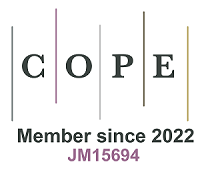fig2

Figure 2. Biogenesis of extracellular vesicles. A current view of exosome and ectosome biogenetic mechanisms is shown at the bottom and top half of the image, respectively. The formation and assembly of exosomes begins in a specialized multivesicular endosome (MVE) where intraluminal vesicles (ILV), enriched in cargo carriers (tetraspanins such as CD63) and deliverables, among other generic markers, are formed by the inward vesiculation of a cholesterol, sphingomyelin enriched microdomain. The process is driven by members of the ESCRT family of proteins (ESCRT 0-II; ESCRT3) and/or by the enrichment of ceramide and other membrane bending factors via the action of sphingomyelinase. The V0 subunit of the V-ATPase may also play a role[98]. Ectosomes (top half of the image) are formed at the plasma membrane by a variety of mechanisms including the ESCRTs often interacting with ARRDC1[56]and CD133[61], the latter shown to be required for small ectosome biogenesis from microvilli in drosophila epithelium. Arf6 plays a role in some forms of ectosome secretion[60]. Recent work also shows that I-Bar domain proteins may play a role in the membrane curvature required for ectosome biogenesis and release[99].









